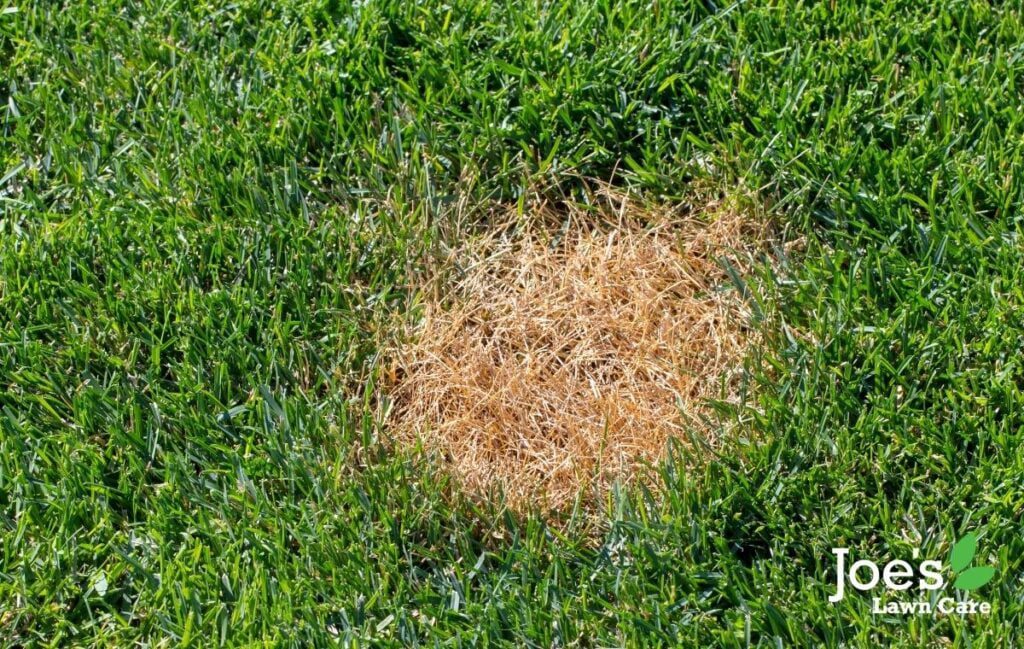When it comes to mind-boggling mysteries, forget about who killed JFK, what happened to the Lost City of Gold, the disappearance of DB Cooper and the secrets surrounding the missing Cryptoqueen because nothing puzzles people more than seeing a bald patch on their lawn. That’s because even the best tended, most-loved lawns can see a random dead spot appear from time to time.
The good news is: most of the time, the cause is pretty obvious.
The bad news is: the cause can be a total mystery.
Now, before we dive into the more common reasons your lawn is suffering from bare patches, we need to remind you of the process. 1, Spot a bald patch. 2, Determine the cause of the bald patch. 3, Remove the cause of the bald patch. And then – and only then – 4, repair the bald patch. Why? Because without dealing with the root cause of your dead grass spots, the problem will keep coming back. In this blog we will take a look at how to diagnose different bald patches in your lawn.
So to help you deal with the underlying issues and help you prevent any future recurrences. Here are some of the most common reasons as to why your lawn is pockmarked with bald spots:

Urine of Some Kind
Now before you march round to your next door neighbour and accuse him of peeing on your lawn on his way back from the pub. We should probably say any urinating done on your lawn is probably from your dog, cat or a wild animal. Either way, urine tends to leave a pretty obvious brown, straw-like patch where the urine has burned your grass. What’s more, you’ll probably notice a circle of dark green grass around this bare patch where there is a much higher level of nitrogen as a result.
Now, the big problem is finding a way to stop animals peeing on your pride and joy, which can be done by training your pets. If it’s a wild animal, however, the best thing you can hope for is to catch them in the act. Then water the spot they peed on as thoroughly as possible to wash it away before it burns your turf (easier said than done).
Subterranean Pests & Grubs
To break it down for you a little, grubs are the larvae of different hard-shelled beetles. Something most lawns can withstand to some degree. The issue is when those grub levels become too high and they start creating dead patches in your lawn. To work out whether this is the case for you, head over to the different dead patches and try pulling up the grass. If it lifts away easily, you’re probably looking at a grub infestation. As I said grubs love nothing more than munching on your roots, leaving nothing to hold your grass in place.
Lawn Diseases Are The Worst
Lawn diseases, fungal diseases, speedwell, yarrow, snow mould, selfheal, ragwort, can all kill your lawn. So, if you see something that doesn’t look like grass, or a fine white webbing across your lawn, then you can be pretty sure you are staring at a potential fungal disease of some kind. Whichever common lawn disease it is, most fungal diseases are usually allowed to thrive due to the environmental conditions in your garden. But while that may sound like bad news, it actually isn’t. Instead, simply practising good lawn care practices will help your lawn fight back and crowd out these diseases moving forward.
Chemical Burns Are Bad
Remember that time you were filling up your weed-killing backpack with broad-spectrum herbicides and your dog ran past and accidentally knocked it over so that it spilled out across your lawn, killing all the grass it touched? That’s called a chemical burn and they’re super-common. That’s because even an appropriate weed killer can kill your grass if the concentration is slightly too high.
Luckily, there’s a simple solution: water. As quick as you can after spilling your chemical, grab the hose pipe and thoroughly water any spot the chemicals touch. Then learn from your lesson and be extra careful next time you’re using crazy chemicals near your lawn. After all, it’s better to prevent than aid.
Don’t Forget About Fertiliser Burns
We know your thinking: but fertiliser is meant to be good for lawns. And you’re right. But so was your granny when she used to say “too much of a good thing can be bad”. That’s definitely the case with fertiliser, which can burn your grass plants if you’re overzealous and leave you with a dead patch. Thankfully the solution is yet again water, so be quick and by liberal and you wash any excess nitrogen away. And remember: when you’re applying fertiliser to your lawn, make sure you read the instructions, measure it out correctly and use a spread for an even layer.
Water Coverage Perfection
Whether you believe in climate change or not, the earth is hotting up, which means watering your lawn is going to become more and more normal. But there’s an art to it, starting with watering deep and less often, as well as making sure all of your lawn is getting a sprinkling. If you don’t, any area that you missed completely could turn brown and go dormant, leaving bald patches on your lawn. To prevent this from happening, make sure you are paying attention to where you have watered or the patterns of your sprinkler to make sure every patch is getting hydrated.
Thanks for reading our guide – How To Diagnose Different Bald Patches in Your Lawn. For more lawn care tips and tricks, follow us on Facebook and Instagram.





